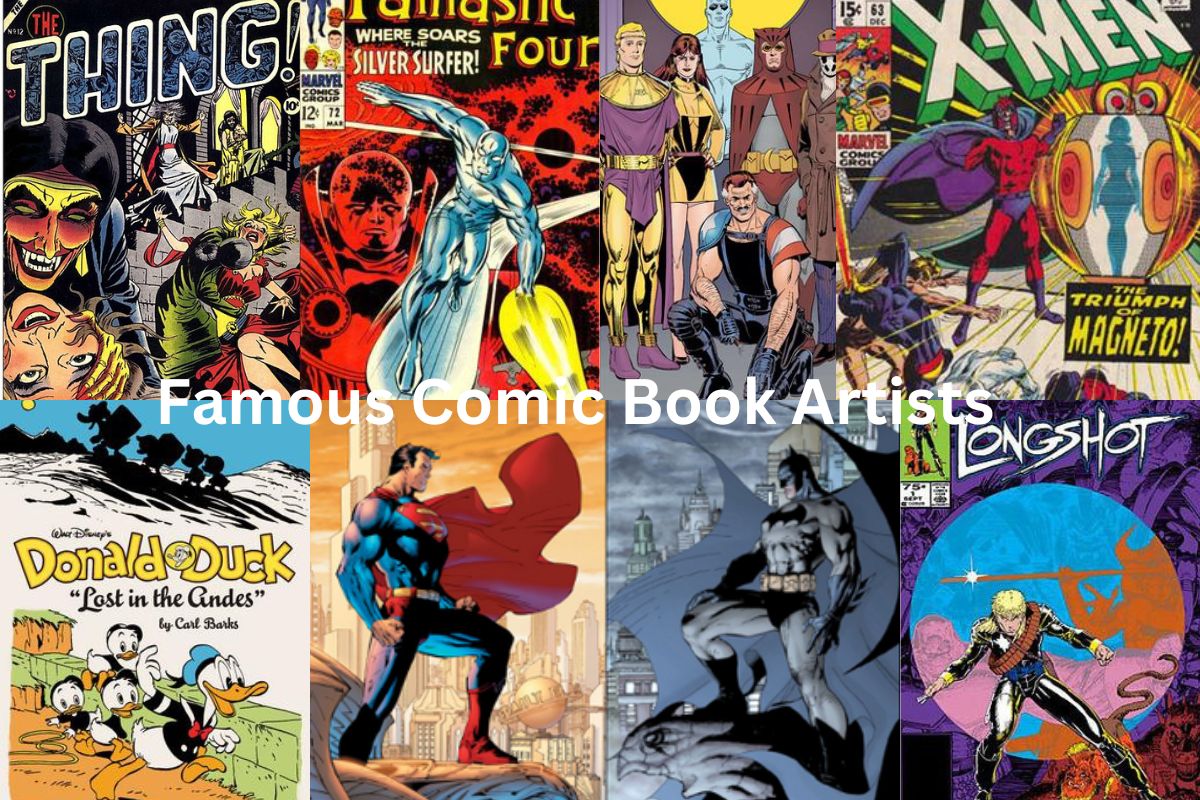Comic book artists have had a huge impact on the development of the comics medium by providing readers with engrossing narratives and unforgettable characters that have remained popular over the course of several decades.
These artists have brought their stories to life via the use of their distinctive styles and cutting-edge techniques, frequently transcending the medium in which they work and having an effect on popular culture as a whole.
These creators have left an indelible mark on the landscape of comic books, whether it is through the conception of iconic superheroes, the writing of narratives that provoke thought, or the introduction of ground-breaking new genres.
Famous Comic Book Artists
1. Frank Miller
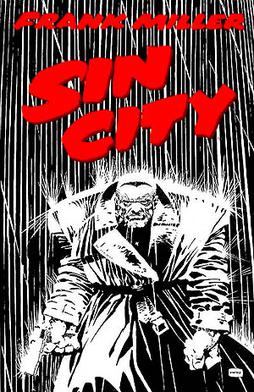
Frank Miller is an acclaimed comic book writer, artist, and film director best known for his dark and gritty storytelling style.
Born on January 27, 1957, in Olney, Maryland, Miller rose to prominence in the comic book world during the 1980s.
Miller’s most influential works include:
- Daredevil: Miller revitalized Marvel’s Daredevil with his writing and artwork, introducing the character Elektra and turning Daredevil into one of Marvel’s most popular heroes. His run on the series, particularly the “Born Again” storyline, is widely regarded as a high point for the character.
- Batman: The Dark Knight Returns: This groundbreaking miniseries, both written and illustrated by Miller, reimagined Batman as a dark and brooding vigilante, paving the way for a more mature and complex portrayal of the character. The Dark Knight Returns is often credited with changing the landscape of comic books, ushering in the modern era of darker, more sophisticated storytelling.
- Batman: Year One: Another seminal Batman work, this storyline, written by Miller and illustrated by David Mazzucchelli, redefined Batman’s origin and set the tone for future interpretations of the character.
- Sin City: A series of neo-noir crime stories created by Miller, Sin City is known for its stark black-and-white artwork and gritty, hard-boiled storytelling. The stories take place in the fictional Basin City and feature an ensemble cast of morally ambiguous characters. The series was later adapted into a successful film directed by Miller and Robert Rodriguez.
- 300: This historical-fiction miniseries, written and illustrated by Miller, tells the story of the Battle of Thermopylae and the Spartan warriors who fought against the Persian Empire. Its distinctive visual style and storytelling approach were later translated into a successful film directed by Zack Snyder.
Throughout his career, Frank Miller has left a lasting impact on the comic book industry, pushing the boundaries of the medium with his innovative storytelling and visual techniques.
2. Jack Kirby
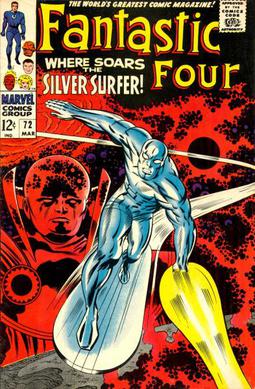
Jack Kirby, born Jacob Kurtzberg on August 28, 1917, in New York City, is one of the most influential comic book artists and writers in the history of the medium.
Often referred to as the “King of Comics,” Kirby is renowned for his dynamic art style, imaginative storytelling, and prolific output.
Also Read: Famous Sci Fi Artists
He played a significant role in the development of the modern superhero genre and co-created many iconic characters for both Marvel and DC Comics.
Some of Jack Kirby’s most notable works and creations include:
- Captain America: Co-created with Joe Simon, Captain America first appeared in 1941 and became an instant symbol of American patriotism during World War II. Kirby’s dynamic artwork and action-packed storytelling helped make Captain America a lasting and iconic character.
- Fantastic Four: In collaboration with writer Stan Lee, Kirby co-created Marvel’s first superhero team, the Fantastic Four, in 1961. This groundbreaking series marked the beginning of the Marvel Universe and introduced a more human and relatable aspect to superhero stories.
- The Avengers: Another collaboration with Stan Lee, The Avengers brought together some of Marvel’s most popular characters, including Iron Man, Thor, the Hulk, and later, Captain America, to form a superhero team. The series has had a lasting impact on popular culture and inspired numerous adaptations, including the successful Marvel Cinematic Universe.
- X-Men: Kirby and Lee co-created the X-Men, a team of superheroes born with mutant powers. The series has been praised for its exploration of themes like prejudice, discrimination, and the nature of humanity.
- Thor: Kirby’s distinctive art style and cosmic storytelling helped shape the world of Asgard and its characters, including the mighty Thor, the God of Thunder.
- The New Gods: After leaving Marvel, Kirby joined DC Comics and created the Fourth World Saga, which included The New Gods, Mister Miracle, and The Forever People. These stories introduced a whole new pantheon of cosmic characters and intricate mythologies, including the villain Darkseid, who has become one of DC’s most iconic antagonists.
Throughout his career, Jack Kirby’s innovative art style, boundless imagination, and prolific output have left an indelible mark on the comic book industry.
His influence can still be felt today in the countless characters, stories, and universes he helped create. Kirby passed away on February 6, 1994, but his legacy continues to inspire comic book artists and writers around the world.
3. Neal Adams
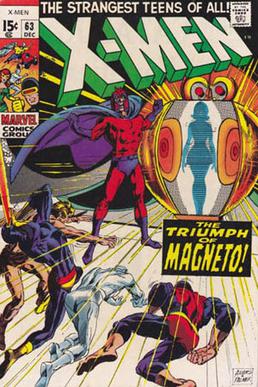
Neal Adams, born June 15, 1941, in New York City, is a highly influential comic book artist known for his realistic art style and innovative storytelling techniques.
Adams’ groundbreaking work in the 1960s and 1970s helped redefine and modernize the look of comic book superheroes, elevating the medium’s artistic standards.
Some of Neal Adams’ most notable works and contributions include:
- Batman: Adams’ work on Batman in the late 1960s and early 1970s, often in collaboration with writer Denny O’Neil, revitalized the character by moving away from the campy tone of the 1960s TV series. Adams and O’Neil introduced a darker, more grounded approach that has heavily influenced subsequent portrayals of Batman. Iconic stories from their collaboration include “The Secret of the Waiting Graves” and “The Joker’s Five-Way Revenge.”
- Green Lantern/Green Arrow: Another collaboration with Denny O’Neil, the Green Lantern/Green Arrow series is famous for its tackling of social and political issues, such as drug abuse, racism, and environmental concerns. The iconic story “Snowbirds Don’t Fly” is particularly memorable for its portrayal of Green Arrow’s sidekick, Speedy, struggling with heroin addiction.
- X-Men: While Adams’ run on X-Men was relatively short, his realistic art style and dynamic storytelling breathed new life into the series and laid the groundwork for its later success in the hands of other creative teams.
- Deadman: Adams’ work on the Deadman series is considered some of his finest, featuring intricate and atmospheric artwork that perfectly suited the character’s supernatural adventures.
- Continuity Studios: In addition to his work in comics, Neal Adams founded Continuity Studios, a commercial art and animation company. Continuity Studios has produced storyboards, design work, and animation for a wide range of clients, including major advertising campaigns and motion pictures.
Throughout his career, Neal Adams has been a strong advocate for creators’ rights and was instrumental in securing pension and health benefits for comic book professionals.
His groundbreaking art style, commitment to storytelling, and advocacy for the comic book community have cemented his legacy as one of the industry’s most respected and influential figures.
4. Steve Ditko
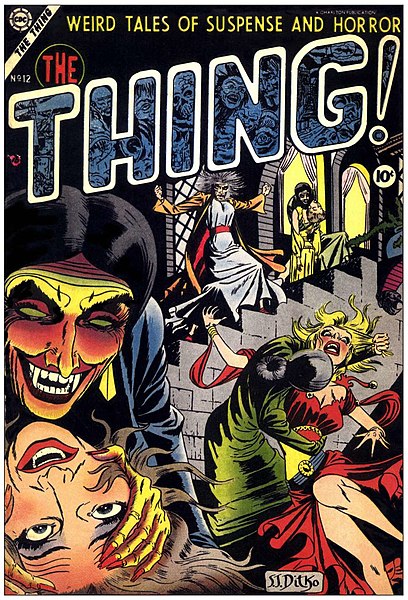
Steve Ditko, born November 2, 1927, in Johnstown, Pennsylvania, was an influential comic book artist and writer known for his distinctive art style and the creation of iconic characters.
He co-created some of the most famous characters in comic book history, working primarily for Marvel Comics and later for DC Comics and other publishers.
Some of Steve Ditko’s most notable works and creations include:
- Spider-Man: In collaboration with writer Stan Lee, Ditko co-created Spider-Man, one of the most iconic and enduring superheroes in popular culture. Ditko designed Spider-Man’s original costume and contributed to the development of key characters such as Aunt May, Uncle Ben, J. Jonah Jameson, and iconic villains like the Green Goblin and Doctor Octopus. His work on The Amazing Spider-Man series in the early 1960s set the foundation for the character’s enduring success.
- Doctor Strange: Another collaboration with Stan Lee, Ditko co-created Doctor Strange, the Sorcerer Supreme of the Marvel Universe. Ditko’s imaginative art style brought the magical and psychedelic dimensions of Doctor Strange’s world to life, influencing generations of artists and readers.
- The Question: Created for Charlton Comics, The Question is a faceless, morally absolutist crimefighter who later became part of the DC Comics universe. The character has been featured in various series and is known for its philosophical themes and Ditko’s unique storytelling approach.
- Hawk and Dove: Co-created with writer Steve Skeates for DC Comics, Hawk and Dove are a superhero duo representing the opposing forces of aggression and pacifism. The characters have been part of various series and incarnations, reflecting Ditko’s interest in exploring philosophical concepts through comic book storytelling.
- Mr. A: Inspired by Ayn Rand’s Objectivist philosophy, Mr. A is a character Ditko created for small press and self-published works. The character embodies Ditko’s personal beliefs and serves as a vehicle for exploring themes of morality, justice, and individualism.
Steve Ditko was known for his reclusiveness and rarely gave interviews or made public appearances.
Despite his enigmatic nature, Ditko’s distinctive art style, imaginative storytelling, and enduring creations have left an indelible mark on the comic book industry.
He passed away on June 29, 2018, but his work continues to inspire and influence comic book creators and fans alike.
5. Will Eisner
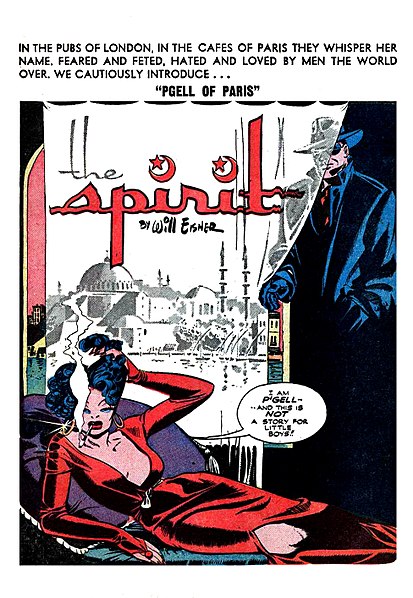
Will Eisner, born on March 6, 1917, in Brooklyn, New York, was an influential comic book artist, writer, and entrepreneur who played a significant role in shaping the medium’s artistic and storytelling potential.
Often referred to as the “father of the graphic novel,” Eisner’s innovative work in the field of comics has had a lasting impact on the industry, inspiring generations of creators.
Some of Will Eisner’s most notable works and contributions include:
- The Spirit: Eisner’s most famous creation, The Spirit was a masked crimefighter who starred in a weekly newspaper comic book insert from 1940 to 1952. The series showcased Eisner’s storytelling prowess and artistic innovation, featuring cinematic layouts, inventive use of lettering, and a blend of humor, drama, and action.
- Contract with God Trilogy: Often regarded as one of the first graphic novels, A Contract with God (1978) is a collection of thematically connected short stories set in a fictional Bronx tenement during the 1930s. The work explores themes of faith, morality, and human nature, reflecting Eisner’s belief in the potential of comics as a literary medium. The other two books in the trilogy, A Life Force (1988) and Dropsie Avenue (1995), continue to explore similar themes and settings.
- Comics and Sequential Art: Eisner’s 1985 instructional book is considered a seminal work in the field of comic book theory and education. The book breaks down the medium’s unique storytelling techniques and provides valuable insights into Eisner’s creative process. He later published two other instructional books, Graphic Storytelling and Visual Narrative (1996) and Expressive Anatomy for Comics and Narrative (2007).
- The Eisner Awards: Named in his honor, the Will Eisner Comic Industry Awards are considered the “Oscars” of the comic book world, recognizing outstanding achievements in the industry across various categories. The awards, held annually at San Diego Comic-Con, help to carry on Eisner’s legacy by celebrating excellence in comic book storytelling.
Throughout his career, Will Eisner was a tireless advocate for the artistic and literary potential of comics.
His innovative storytelling techniques, groundbreaking works, and dedication to the medium have left a lasting legacy in the comic book industry.
Eisner passed away on January 3, 2005, but his influence can still be seen in the work of countless creators and the ongoing evolution of the medium.
6. Brian Bolland
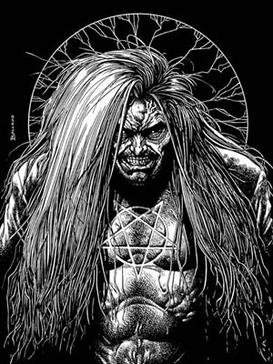
Brian Bolland, born March 26, 1951, in Butterwick, Lincolnshire, England, is a highly regarded British comic book artist known for his intricate and realistic artwork.
Bolland gained prominence working on British comics before making a significant impact on the American comic book scene.
He is particularly famous for his work on the character Judge Dredd and his contributions to DC Comics.
Some of Brian Bolland’s most notable works include:
- Judge Dredd: Bolland’s artwork for the British comic book series 2000 AD, particularly the Judge Dredd stories, helped define the character’s iconic look. Bolland’s detailed, clean, and bold art style made him one of the most popular artists on the series during the late 1970s and early 1980s.
- Camelot 3000: This 12-issue comic book series, written by Mike W. Barr and illustrated by Bolland, was one of DC Comics’ first forays into the direct market (specialty comic book stores) in the early 1980s. The futuristic Arthurian tale showcased Bolland’s intricate artwork and helped solidify his reputation as a leading comic book artist.
- Batman: The Killing Joke: Written by Alan Moore and illustrated by Bolland, this one-shot graphic novel is considered one of the most influential Batman stories of all time. The Killing Joke provides a possible origin for the Joker and explores the twisted relationship between Batman and his arch-nemesis. Bolland’s detailed and realistic art style, combined with Moore’s dark and psychologically complex storytelling, has made The Killing Joke a classic in the Batman canon.
- Cover Art: Bolland is also well-known for his striking cover art on numerous comic book series, including Animal Man, Wonder Woman, The Invisibles, and The Flash. His covers often feature highly detailed illustrations with a strong sense of design and composition, making them instantly recognizable and memorable.
Throughout his career, Brian Bolland has been celebrated for his intricate artwork, attention to detail, and ability to bring characters to life with a strong sense of realism.
His contributions to both British and American comic books have left a lasting impression on the medium and continue to inspire new generations of artists and fans.
7. Jim Lee
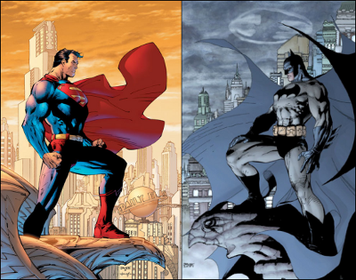
Jim Lee, born August 11, 1964, in Seoul, South Korea, is a highly influential comic book artist, writer, and publisher known for his dynamic and detailed art style.
Lee gained prominence in the late 1980s and early 1990s, working on popular titles for Marvel Comics before co-founding Image Comics and later joining DC Comics.
Some of Jim Lee’s most notable works and contributions include:
- X-Men: Lee’s work on Marvel’s X-Men in the early 1990s, particularly the relaunch with the new title “X-Men” #1 (written by Chris Claremont), was met with tremendous success. The issue became the best-selling comic book of all time, with sales exceeding 8 million copies. Lee’s art style, characterized by its dynamic poses and detailed anatomy, became iconic and heavily influenced the comic book industry during that time.
- Image Comics: In 1992, Jim Lee, along with other high-profile comic book creators, co-founded Image Comics, an independent publisher that allowed creators to retain ownership of their characters and work. Lee’s studio, WildStorm Productions, introduced several popular titles, including “WildC.A.T.s,” “Stormwatch,” and “Gen¹³.”
- DC Comics: In 1998, Lee sold WildStorm Productions to DC Comics, and later he began working on major DC titles. Some of his notable work includes “Batman: Hush” (written by Jeph Loeb), which is considered one of the most iconic Batman storylines, and the “Superman: For Tomorrow” arc (written by Brian Azzarello).
- Co-Publisher at DC: In 2010, Jim Lee was named Co-Publisher of DC Comics, alongside Dan DiDio. During his tenure, Lee played a significant role in the company’s initiatives, including the “New 52” relaunch in 2011, which revamped and modernized the entire DC Universe.
- DC Universe Online: As the Executive Creative Director for the massively multiplayer online role-playing game (MMORPG) DC Universe Online, Lee contributed his artistic vision and character designs to the game, bringing the DC Universe to life for players around the world.
Throughout his career, Jim Lee has been celebrated for his dynamic and detailed art style, which has had a significant impact on the comic book industry.
His work as an artist, creator, and publisher has left a lasting legacy in the world of comics and continues to inspire new generations of fans and creators.
8. Dave Gibbons
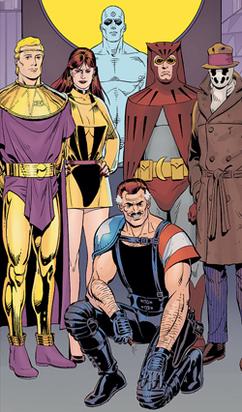
Dave Gibbons, born April 14, 1949, in London, England, is a celebrated British comic book artist, writer, and letterer.
Gibbons has worked on numerous popular titles for both British and American comic book publishers, but he is best known for his collaboration with writer Alan Moore on the groundbreaking graphic novel “Watchmen.”
Some of Dave Gibbons’ most notable works and contributions include:
- 2000 AD: Gibbons began his career working on various British comic book titles, including the popular anthology series 2000 AD. He contributed artwork to numerous stories, including the iconic character Judge Dredd, where his clean and detailed art style earned him recognition.
- Green Lantern: In the early 1980s, Gibbons worked for DC Comics, illustrating the Green Lantern series, which was written by Len Wein and later by Steve Englehart. His work on Green Lantern showcased his versatility as an artist and further established him as a leading talent in the industry.
- Watchmen: In collaboration with writer Alan Moore, Gibbons co-created the groundbreaking graphic novel “Watchmen,” published by DC Comics in 1986-1987. The series is widely regarded as one of the greatest and most influential comic book works of all time, known for its complex narrative, mature themes, and innovative storytelling techniques. Gibbons’ artwork, along with his distinctive lettering and panel designs, played a crucial role in the success of “Watchmen.”
- Give Me Liberty: Gibbons teamed up with writer Frank Miller to create the limited series “Give Me Liberty,” published by Dark Horse Comics in 1990. The series, set in a dystopian future, follows the adventures of protagonist Martha Washington and explores themes of political satire, social commentary, and rebellion.
- The Originals: In 2004, Gibbons wrote and illustrated “The Originals,” a graphic novel published by Vertigo, an imprint of DC Comics. The story is set in a retro-futuristic world and deals with themes of youth culture, social rivalry, and violence.
Throughout his career, Dave Gibbons has demonstrated exceptional skill as an artist, writer, and letterer, contributing to the comic book industry’s ongoing evolution.
His groundbreaking work on “Watchmen,” along with his numerous other accomplishments, has left a lasting impact on the medium and continues to inspire generations of comic book creators and fans.
9. Carl Barks
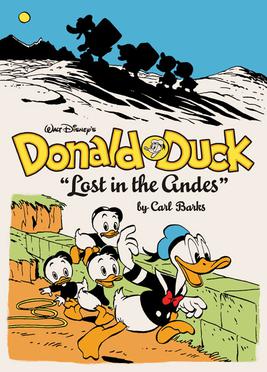
Carl Barks, born March 27, 1901, in Merrill, Oregon, was an influential American comic book artist and writer best known for his work on Disney comics featuring Donald Duck and his extended family.
Often referred to as “The Good Duck Artist,” Barks created many memorable characters and stories that have had a lasting impact on the world of comics and animation.
Some of Carl Barks’ most notable works and contributions include:
- Donald Duck: Barks began his career at Disney as an inbetweener and later a storyboard artist, but his most significant contribution was as a comic book artist and writer for Disney’s Donald Duck comics. Barks worked on the character for nearly three decades, from the 1940s to the 1960s, creating hundreds of stories that defined the character and his universe.
- Uncle Scrooge: One of Barks’ most famous creations, Uncle Scrooge, first appeared in the story “Christmas on Bear Mountain” (1947). The wealthy, adventure-loving, and sometimes miserly uncle of Donald Duck, Scrooge McDuck, went on to become one of Disney’s most popular characters, starring in his comic book series and animated adaptations.
- The Disney Ducks Universe: In addition to creating Uncle Scrooge, Barks developed many other characters in the Disney Ducks Universe, including Gyro Gearloose, Gladstone Gander, Flintheart Glomgold, Magica De Spell, and the Beagle Boys. These characters, along with Barks’ imaginative stories and settings, contributed to a rich and vibrant universe that continues to entertain readers and viewers today.
- Adventure Stories: Barks is also known for his adventure stories featuring Donald Duck, Uncle Scrooge, and their family, in which the characters embark on treasure hunts, explore exotic locales, and encounter various challenges. These stories often combined humor, excitement, and valuable life lessons, creating a unique and engaging reading experience.
- Barks’ Art Style: Carl Barks’ distinctive art style, characterized by its expressive characters, detailed backgrounds, and engaging storytelling, had a significant impact on the medium of comic books. His work influenced many comic artists, including Don Rosa, who continued to develop the Disney Ducks Universe after Barks’ retirement.
Carl Barks passed away on August 25, 2000, but his work continues to entertain and inspire generations of comic book fans and creators.
His contributions to the Disney Ducks Universe have left a lasting legacy in the world of comics and animation.
10. Arthur Adams
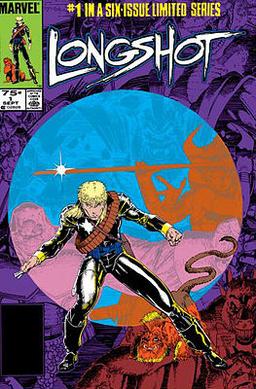
Arthur Adams, born April 5, 1963, in Holyoke, Massachusetts, is an American comic book artist known for his intricate, detailed, and dynamic art style.
Adams gained prominence in the 1980s and has since worked on various titles for both Marvel Comics and DC Comics, as well as several independent publishers.
Some of Arthur Adams’ most notable works and contributions include:
- Longshot: Adams made his mark in the comic book industry with his work on the Marvel Comics limited series “Longshot” (1985), written by Ann Nocenti. The series featured a genetically engineered protagonist from another dimension and showcased Adams’ unique art style and intricate character designs.
- X-Men: Adams’ work on various X-Men titles, particularly “X-Men Annual” #9 and the “Asgardian Wars” storyline (1985), cemented his reputation as a talented artist with a flair for dynamic and detailed character illustrations. His influence on the X-Men’s visual style can be seen in numerous subsequent works featuring the characters.
- Monkeyman and O’Brien: Adams created “Monkeyman and O’Brien,” a comic book series published by Dark Horse Comics, which he wrote and illustrated. The series, a mix of science fiction and adventure, follows the exploits of a super-intelligent gorilla from another dimension and a human scientist as they face various threats and challenges.
- Cover Art: In addition to his interior work, Arthur Adams is known for his striking and detailed cover art on numerous comic book series, including “Fantastic Four,” “Uncanny X-Men,” and “The Avengers.” His covers often feature complex compositions and a high level of detail, making them instantly recognizable.
- Creator-Owned Projects: Adams has also worked on several creator-owned projects, such as “Jonni Future” and “The Atomics,” which showcase his creative versatility and commitment to the comic book medium.
Throughout his career, Arthur Adams has been celebrated for his detailed and dynamic art style, which has influenced a generation of comic book artists.
His work on both mainstream and independent titles has left a lasting impact on the industry and continues to inspire new generations of comic book artists and fans.

